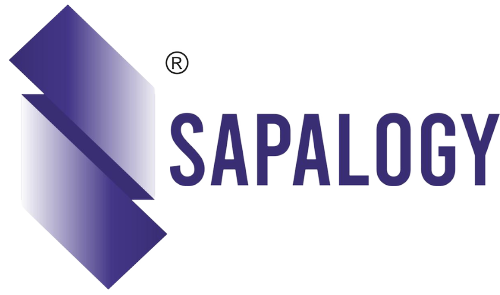In today’s fast-paced digital world, businesses heavily rely on technology to streamline their operations and achieve organizational goals. With the increasing dependence on technology, the need for efficient IT support has become paramount. That’s where IT service desks come into play. In this article, we will delve into the vital role and functions of an IT service desk, highlighting their significance in providing technical assistance, troubleshooting, and ensuring smooth business operations.
Understanding the IT Service Desk
The IT service desk serves as the first point of contact between end-users and the IT department of an organization. It functions as a centralized hub that provides technical assistance and support to employees, customers, or other users of the organization’s IT systems and services.
Core Responsibilities of an IT Service Desk
Incident Management
One of the primary functions of an IT service desk is incident management. This involves handling and resolving various IT-related issues and disruptions faced by end-users. These issues can range from hardware or software malfunctions to network connectivity problems.
Request Management
Apart from addressing issues, the IT service desk also manages service requests. Employees may require software installations, hardware upgrades, or access to specific resources. The service desk efficiently handles these requests, ensuring timely fulfillment.
Problem Management
Beyond individual incidents, the IT service desk also engages in problem management. This involves identifying the root causes of recurring issues and implementing long-term solutions to prevent their reoccurrence, thus enhancing system reliability.
Communication and Customer Service
Effective Communication
A crucial aspect of an IT service desk’s success is effective communication. Service desk agents must possess excellent communication skills to comprehend users’ issues accurately and provide clear instructions for issue resolution.
Stellar Customer Service
The IT service desk operates with a customer-centric approach. Ensuring top-notch customer service fosters a positive experience for end-users, building trust and rapport with the IT department.
IT Service Desk Tools and Technologies
Ticketing Systems
Ticketing systems are essential tools utilized by IT service desks to track and manage user requests and incidents efficiently. These systems help prioritize tasks, monitor progress, and ensure timely resolutions.
Remote Support Tools
IT service desks often use remote support tools that enable technicians to access users’ devices remotely. This aids in faster issue diagnosis and resolution, saving both time and resources.
The Role of IT Service Desk in ITIL
The Information Technology Infrastructure Library (ITIL) is a widely adopted framework for IT service management. The IT service desk plays a significant role in ITIL, aligning its processes with ITIL guidelines to enhance IT service delivery and customer satisfaction.
Evolving Trends in IT Service Desk
AI and Automation
With the advent of artificial intelligence and automation, IT service desks are incorporating chatbots and virtual assistants to handle routine queries and automate repetitive tasks, further improving efficiency.
Self-Service Portals
Self-service portals empower users to troubleshoot minor issues independently, reducing the burden on the IT service desk and promoting user empowerment.
How can IT service desks handle high call volumes effectively?
Prioritize Call Queues with Intelligent Routing
One of the key challenges during high call volumes is ensuring that urgent issues are addressed promptly. Implementing intelligent call routing systems can help prioritize calls based on the nature of the problem and the expertise of available agents. By directing urgent queries to specialized agents, IT service desks can ensure quicker resolutions and minimize customer frustration.
Optimize Self-Service Options
Encouraging self-service options for users can significantly reduce the overall call volume on the service desk. Providing a comprehensive knowledge base, FAQ section, and troubleshooting guides empowers users to resolve common issues independently. By promoting self-help resources, service desks can focus on handling more complex and critical problems.
Implement AI-Powered Chatbots
Integrating AI-powered chatbots into the service desk system can prove invaluable during high call volumes. Chatbots can handle routine queries, provide immediate responses, and escalate complex issues to human agents. This not only enhances the overall customer experience but also frees up service desk staff to concentrate on intricate technical challenges.
Staff Training and Skill Development
Well-trained and knowledgeable staff are the backbone of any effective IT service desk. Investing in continuous training and skill development programs ensures that agents stay up-to-date with the latest technologies and can handle a diverse range of issues efficiently. This enhances the service desk’s overall capacity to handle high call volumes effectively.
Utilize Ticketing Systems
Implementing a ticketing system can streamline the handling of incoming requests and ensure that no query goes unattended. Tickets help in tracking the status of each issue, assigning tasks to appropriate agents, and maintaining a record of customer interactions. This organized approach enhances accountability and reduces the risk of overlooking critical problems.
Collaborate with IT Teams
Effective communication and collaboration between IT teams can significantly improve call resolution times. Establishing seamless communication channels between service desk agents and other IT departments helps in promptly addressing complex issues that may require specialized expertise.
Monitor and Analyze Metrics
Tracking key performance metrics, such as average call handling time, first call resolution rate, and customer satisfaction levels, allows service desks to identify areas for improvement. Regularly analyzing these metrics helps in optimizing processes and ensures a smooth workflow even during high call volumes.
Offer Proactive Support
Anticipating potential issues and offering proactive support can prevent users from encountering problems in the first place. Providing regular system updates, maintenance reminders, and troubleshooting tips can reduce the number of incoming calls, easing the burden on the service desk.
Foster a Positive Work Environment
A positive work environment plays a vital role in keeping service desk agents motivated and engaged, even during peak call times. Recognizing their efforts, providing opportunities for growth, and fostering a sense of camaraderie can boost agent morale and enhance their efficiency in handling high call volumes.
Outsourcing Overflow Calls
During periods of exceptionally high call volumes, outsourcing overflow calls to external service providers can be a viable option. Partnering with reputable third-party vendors ensures that customer inquiries are addressed promptly, maintaining service levels and preventing backlogs.
Conclusion
In conclusion, the IT service desk is the backbone of any organization’s IT support structure. It ensures seamless operations by resolving issues, managing service requests, and maintaining open communication with end-users. With advancements in technology, IT service desks continue to evolve, embracing AI, automation, and self-service solutions to enhance their effectiveness. Their significance in providing exceptional customer service and technical support cannot be overstated.
More info: help desk services




